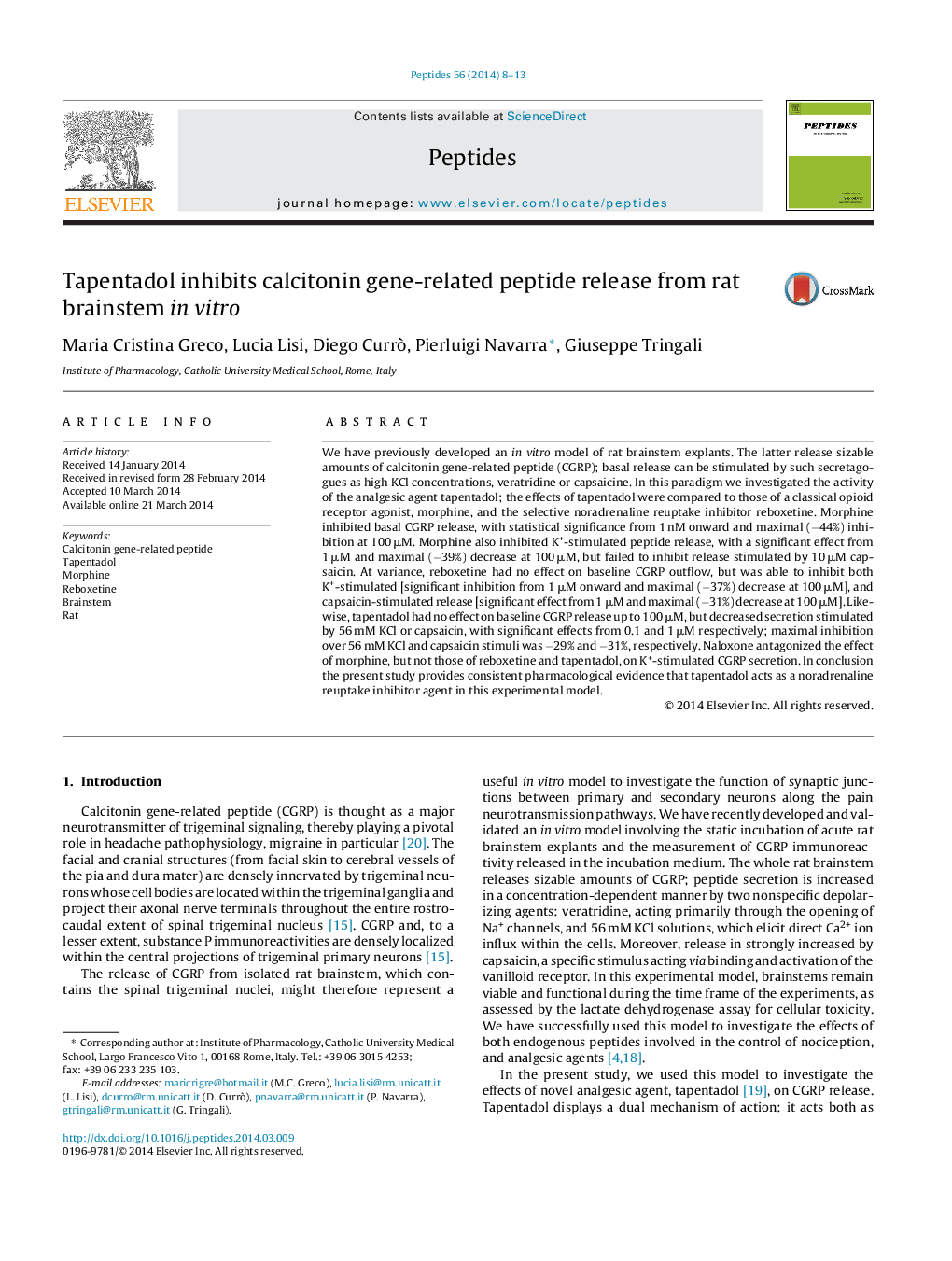| Article ID | Journal | Published Year | Pages | File Type |
|---|---|---|---|---|
| 2006057 | Peptides | 2014 | 6 Pages |
•We studied the effects of tapentadol on CGRP release from isolated rat brainstem.•Tapentadol did not modify CGRP release in basal condition.•Tapentadol inhibited both K+- and capsaicin-evoked CGRP release.•The effects of tapentadol were compared to those morphine and reboxetine.•Tapentadol fully mimicked the effects of reboxetine in this paradigm.
We have previously developed an in vitro model of rat brainstem explants. The latter release sizable amounts of calcitonin gene-related peptide (CGRP); basal release can be stimulated by such secretagogues as high KCl concentrations, veratridine or capsaicine. In this paradigm we investigated the activity of the analgesic agent tapentadol; the effects of tapentadol were compared to those of a classical opioid receptor agonist, morphine, and the selective noradrenaline reuptake inhibitor reboxetine. Morphine inhibited basal CGRP release, with statistical significance from 1 nM onward and maximal (−44%) inhibition at 100 μM. Morphine also inhibited K+-stimulated peptide release, with a significant effect from 1 μM and maximal (−39%) decrease at 100 μM, but failed to inhibit release stimulated by 10 μM capsaicin. At variance, reboxetine had no effect on baseline CGRP outflow, but was able to inhibit both K+-stimulated [significant inhibition from 1 μM onward and maximal (−37%) decrease at 100 μM], and capsaicin-stimulated release [significant effect from 1 μM and maximal (−31%) decrease at 100 μM]. Likewise, tapentadol had no effect on baseline CGRP release up to 100 μM, but decreased secretion stimulated by 56 mM KCl or capsaicin, with significant effects from 0.1 and 1 μM respectively; maximal inhibition over 56 mM KCl and capsaicin stimuli was −29% and −31%, respectively. Naloxone antagonized the effect of morphine, but not those of reboxetine and tapentadol, on K+-stimulated CGRP secretion. In conclusion the present study provides consistent pharmacological evidence that tapentadol acts as a noradrenaline reuptake inhibitor agent in this experimental model.
